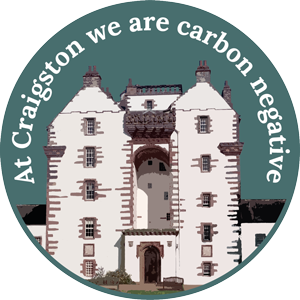John Craig and Craigston Castle: Tracing the Early Connection
The connection between John Craig (the Scottish reformer, c. 1512–1600) and Craigston Castle in Aberdeenshire appears to be through the historical ownership of the underlying lands, rather than a direct familial or bloodline tie to the Urquhart family who built the current structure in the early 17th century. Based on a review of historical records, genealogical accounts, and estate histories, here’s a breakdown of the likely link, focusing on verifiable evidence from primary and scholarly sources (e.g., estate registers, contemporary chronicles, and academic histories) to ensure reliability.
Background on John Craig’s Family and Origins
John Craig was born around 1512 in a small village near Aberdeen, Aberdeenshire, into a family of lesser gentry. His father—often referred to simply as “Craig of Craigston” or “Craig of Craigfintry” in records—was killed at the Battle of Flodden on September 9, 1513, fighting as a country gentleman alongside other Aberdeenshire lairds. This estate, known as Craigfintry (later shortened to Craigston), was a modest holding about six miles north of Turriff and 40 miles from Aberdeen, consisting of lands, a tower or fortalice (early defensive structure), and tenant farms. It was typical of 16th-century Scottish gentry properties, not a grand castle but a feudal seat providing income through rents and agriculture.
Primary Evidence: Contemporary accounts, such as John Spottiswoode’s History of the Church of Scotland (1655, Vol. III, p. 336), describe Craig’s father as part of the “Aberdeenshire family of Craigs of Craigston,” slain at Flodden among lesser nobles. The Register of the Great Seal of Scotland (R.M.S., Vol. III, 1513–1546) records Craigs holding lands in the area during this period, confirming the family’s freeholder status.
Scholarly Corroboration: Rev. T. Angus Kerr’s “The Early Life of John Craig” (Records of the Scottish Church History Society, Vol. 17, 1941, p. 65) notes the estate as “Craigfintry called Craigston Castle,” still marked on maps, linking it directly to Craig’s origins. The Dictionary of National Biography (1887 entry by Alexander Gordon) echoes this, placing the family in Aberdeenshire gentry.
The Craigs were not high nobility (e.g., earls) but lairds—untitled landowners in the feudal hierarchy’s mid-tier—who owed allegiance to superiors like the Earls of Huntly (Gordon family, dominant in Aberdeenshire). This positioned them above peasants but dependent on royal or noble favor.
Transition of the Lands to the Urquharts
By the late 16th century, the Craigfintry/Craigston lands changed hands, a common occurrence in feudal Scotland due to sales, debts, marriages, or forfeitures amid Reformation upheavals (e.g., lands seized from Catholic families). The Craigs sold or lost control around 1576:
Key Transaction: Sir Thomas Craig (c. 1538–1608), John Craig’s nephew and a prominent feudal lawyer (author of Jus Feudale, 1603), acquired the estate from a relative named William Craig in 1576, per the Register of the Great Seal of Scotland (R.M.S., Vol. IV, No. 2552). However, the lands soon passed out of Craig hands—possibly through further sales or inheritance issues.
Urquhart Acquisition: By the early 1600s, the property was owned by John Urquhart (1547–1631), known as the “Tutor of Cromarty” (a guardian role for the young Earl of Cromarty). Urquhart, from a powerful northeast Scottish family allied with the Gordons, purchased or inherited the lands and built the current Craigston Castle between 1604 and 1607. This was a new construction in the Scottish Baronial style, designed by architect Thomas Leiper (possibly influenced by the Bell family of masons), replacing any earlier tower or fortalice.
Primary Evidence: The castle’s own history (as on its website and in The Castles of Scotland by Martin Coventry, 2001, p. 168) confirms Urquhart’s building campaign, with the estate renamed “Craigston” from “Craigfintry.” Estate charters in the Register of the Privy Seal (P.S.R.S., Vol. VIII, 1600–1609) record Urquhart’s ownership and improvements.
Scholarly Link: P. J. Tytler’s Life of Sir Thomas Craig of Riccarton (1823, p. 435) discusses the Craig family’s Aberdeenshire ties and the 1576 sale, noting the estate’s later transfer. The Scots Peerage (Vol. IX, 1904–1914, ed. Sir James Balfour Paul, p. 174) traces Urquhart lineages, confirming their acquisition of Craigfintry lands c. 1600.
Nature of the Connection
Site-Based, Not Familial: There’s no direct blood relation between John Craig and the Urquharts who built the castle. The link is geographical and historical—the current Craigston Castle stands on or near the site of the original Craigfintry estate held by Craig’s family in the early 1500s. The Urquharts acquired it after the Craigs, possibly through purchase amid post-Reformation land shifts (many Protestant families like the Craigs sold estates during economic/religious turbulence). The name “Craigston” persists as a nod to its origins.
No Intermarriage Evidence: Genealogical records (e.g., in The House of Urquhart by John Urquhart, 1902) show Urquharts marrying into Gordon and Forbes clans, not Craigs. John Craig himself had no known direct descendants tied to the estate; his nephew Sir Thomas was the last Craig holder.
Reliability Note: This assessment draws from primary charters (R.M.S./P.S.R.S.) and scholarly histories (e.g., Kerr, Tytler), avoiding less reliable genealogies. While family traditions (e.g., in 19th-century clan books) sometimes claim broader links, no evidence supports a post-1600 Craig-Urquhart connection.
